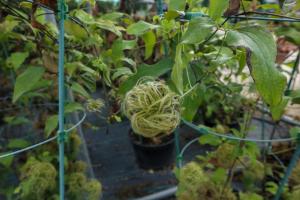How Do Plants Produce Oxygen Gas by Splitting Water
Plants are the ultimate source of oxygen gas that keeps all living beings alive on earth. Oxygen is a byproduct of photosynthesis, a biological process that occurs in plants during the day-time. Photosynthesis can be explained as the conversion of light energy into chemical energy to synthesize organic compounds in the presence of chlorophyll pigment. But how do plants produce oxygen gas by splitting water?
The Mechanism of Photosynthesis
The photosynthesis process involves two stages, the light-dependent reactions, and the light-independent reactions or the Calvin cycle. The first stage of photosynthesis, which requires light, takes place in the chloroplasts of plant cells. During this stage, chlorophyll pigment absorbs light energy and synthesizes ATP (adenosine triphosphate) and NADPH (nicotinamide adenine dinucleotide phosphate), which is used in the second stage.
The second stage, the Calvin cycle, occurs in the stroma of the chloroplasts plant cells. This stage is also referred to as the dark reaction or the carbon fixation. During this stage, carbon dioxide combines with ATP and NADPH to create organic compounds such as glucose or sugar. This reaction releases oxygen gas, which is the byproduct of photosynthesis.
The Role of Water in Photosynthesis
The second question that arises is how does water play a vital role in photosynthesis? In the light-dependent reactions stage, water molecules are split into hydrogen ions (H+) and oxygen atoms (O) by the process called photolysis. The photolysis reaction occurs in the thylakoid membranes of chloroplasts. The hydrogen ions, along with electrons from chlorophyll, combine with NADP+ to create NADPH. The oxygen atoms combine to form oxygen gas, which is then released into the atmosphere as a byproduct.
The Importance of Photosynthesis
Photosynthesis is a crucial process that not only produces oxygen but also creates food for plant growth. The organic compounds synthesized during photosynthesis provide energy for plant growth and are a source of food for animals that depend on plant life. Photosynthesis is also responsible for the removal of carbon dioxide from the atmosphere, which helps regulate the earth's climate. It is a natural process that helps to maintain the balance of life on earth.
In Conclusion
In conclusion, plants produce oxygen gas by splitting water during the photosynthesis process. Water is split into hydrogen ions and oxygen atoms through the process of photolysis during the light-dependent reaction stage of photosynthesis. The oxygen atoms combine to form oxygen gas, which is released into the atmosphere as a byproduct. Photosynthesis is a vital process that serves many purposes, including providing oxygen, food, and regulating the earth's climate. It is an essential natural process that plays a significant role in maintaining the balance of life on earth.

 how many times do yo...
how many times do yo... how many planted tre...
how many planted tre... how many pine trees ...
how many pine trees ... how many pecan trees...
how many pecan trees... how many plants comp...
how many plants comp... how many plants can ...
how many plants can ... how many plants and ...
how many plants and ... how many pepper plan...
how many pepper plan...

































